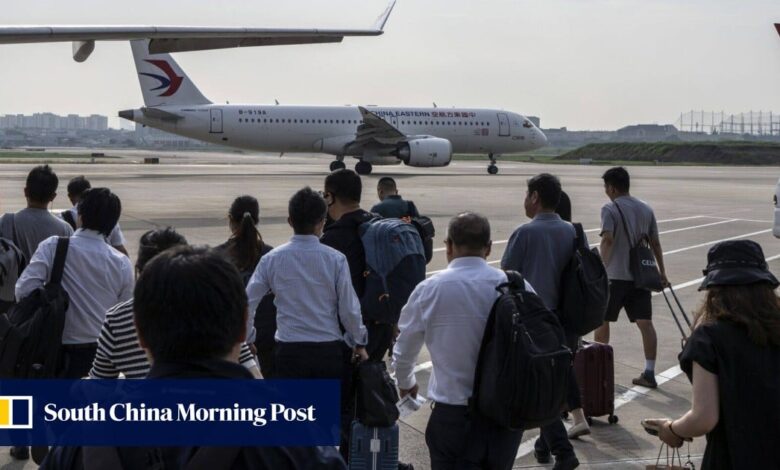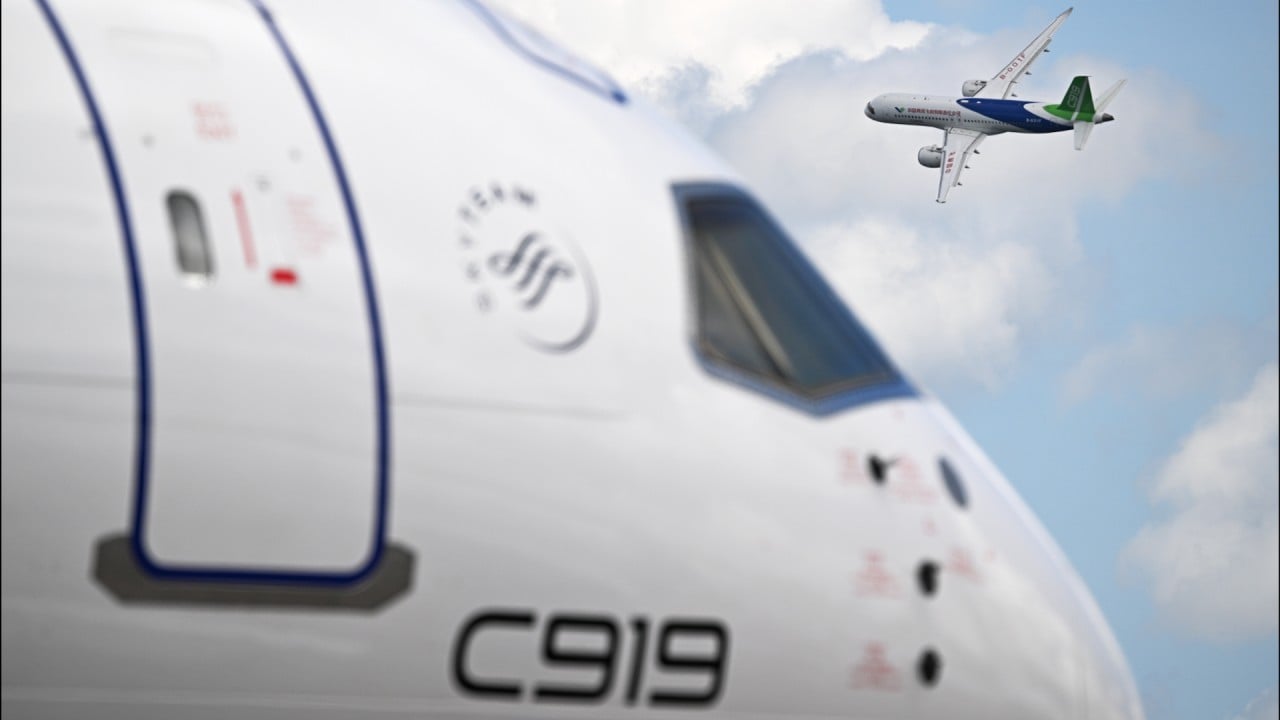China’s C919 passenger jet spreads its wings with delivery milestone to 3 carriers

“The speed with which Comac is delivering the C919 to three customers in one month reflects growing capabilities to tackle production bottlenecks and coordinate with regulators and multiple suppliers and buyers for a quick turnaround between order and delivery,” said Li Hanming, an US-based aviation analyst.
China’s state-owned manufacturer is seeking a foothold in the world’s second-largest aviation market by size at a time cracks appear in the dominance of Western planemakers.
If output cannot be ramped up, it will hobble sales and buyers may cancel or downsize orders
“If output cannot be ramped up, it will hobble sales and buyers may cancel or downsize orders.”
Air China said last week that its first C919 would bear a commemorative registration code of B-919X, and that pilots, cabin crew and maintenance teams were wrapping up three months of operation and safety training at Comac’s headquarters in Shanghai.
The Air China C919 would seat 158 passengers, six less than the seating configuration for China Eastern Airlines and China Southern Airlines, to allow more space and comfort for passengers, Air China said.
China Southern also said it had been working with Comac to prepare its first C919 for operation, with the jet set to fly key routes from Guangzhou to Beijing, Shanghai and Chengdu.
China Eastern Airlines, meanwhile, has inducted seven jets into service, with 98 on order.
The Shanghai-based Suparna Airlines, a subsidiary of Hainan Airlines, will be the first non-state-owned buyer of the C919, with the first delivery of its 30-unit order scheduled for the fourth quarter.
Comac would deliver 150 of the C919 annually in the coming five years, according to the Shanghai-based Airwefly aviation platform.
But the level of output still pales in comparison to Airbus, as the European multinational aerospace corporation churned out 229 A320neo aircraft – the model the C919 aspires to compete against – between January and June.
And despite being marred by crises, US-based Boeing also delivered 137 of its 737s in the first half of the year.
The delivery plan for the C919 also hinges on Comac’s ability to secure continuous imports of engines and other critical parts from Western suppliers, with the hope that commercial deals can continue to be insulated from geopolitical turbulence.
The C919 relies on engines supplied by CFM International, a joint venture between France’s Safran and America’s GE Aerospace, with only parts of the fuselage sourced domestically.
Source link




